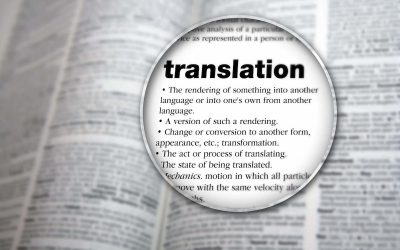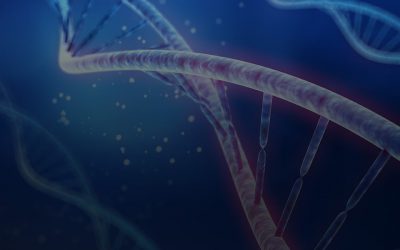A New Year: Looking at 2018 Translation Conferences
The translation and localization industry is filled with translation conferences, learning events, and expos where leaders in the industry can…
Idioms: Don’t Cut Corners with Marketing Translations
One of the most difficult tasks that translators face is dealing with culturally specific content, such as idioms. Each language, in regular informal speech
Post-Editing: The Future of Linguistics?
Machine translation (MT), I know what you are thinking when you hear that phrase. Machine translations translate words, not language. While that may be…
Translation Quality is Required for China’s Growing Pharmaceutical Industry
Translating for the life science sector is one of the fastest growing translation areas worldwide. Due to the global emphasis translation quality…
CFDA:中国医药监管的未来与机会
中国食品药品监督管理局(CFDA)成立于2013年。原来称作“国家食品药品监督管理局”(State Food and Drug Administration,简称SFDA),后改名为“国家食品药品监督管理总局”(China Food and Drug Administration,简称CFDA),将多个监管机构合并为食品和药物安全的唯一监管机构。
Cross Cultural Writing Best Practices
When writing for a cross-cultural audience it is important to keep a few things in mind. While we all know that shorter, more simple sentences…
Translation Memory and Maintaining Your Investment
Translation memory tools first appeared commercially in the in the early 1990s. It served as a unique method to increase translation productivity…
Localization Industry Trends: A look at LocWorld35
LocWorld35 Silicon Valley kicked off yesterday with the preconference program, this leading conference in the language and localization industry…
Innovation: A Top Priority for the Life Sciences Industries
Yesterday, FDA Commissioner Scott Gottlieb made a statement on the new steps that the FDA is taking to improve innovation in medical devices…
The Real Challenges and Pitfalls of Machine Translation
I found a really interesting article this week, that I thought was worth bringing up. It is based on a study of phrases utilized in clinical settings, and the effectiveness of a free machine translation to bridge communication gaps between patient and caregiver....
China Announces Change to Clinical Trial Requirements
Earlier this week, China's State Council announced plans to allow clinical trial data from other countries. As one of the largest pharmaceutical markets in the world, they are looking to bring in new, innovative therapies quicker. This comes on the heels of changes...
Tips for Establishing and Maintaining a Quality Management System (QMS)
Let's talk about quality! When it comes to translation there are two types of quality, the end product that is being delivered and the process it goes through to get there. Today we are going to look at the latter. Quality management systems, used by industries...
Book A Translator Service for the Life Science Industries
As we have discussed before, translators are increasingly being used in clinical settings. Utilizing interpreters, whether via phone or in person, enables patients or clinical trial participants to fully grasp information given to them. This allows clinicians to...
Medical Device Quality and ISO 13485:2016 Certification
Published in 2016, ISO 13485:2016 is in its third edition. ISO 13485:2016 comes on the heels of the ISO 13485:2003. Beginning in March 2016, there is a three-year transition period which comes to an end on February 28th 2019. These regulatory requirements undergo...
Man vs Machine Translation: The Continued Debate
Quite a while ago we took a look at the role of machine translation (MT) in life science translations. It's a hot topic of debate, and we can all see with a quick internet-based translation what the pitfalls are. These one-off quick translations of a block of text...
Looking at Healthcare Needs for an Aging Population in Japan
Earlier this month we were looking at some of the factors affecting the life science industries today. Undeniably, the world’s aging population is changing the priorities of health care delivery and infrastructure all over the globe. With an older population, there's...
The Evolving Regulatory Environment in Japan (PMDA)
At DIA in June of this year, Tatsuya Kondo, Chief Executive of Pharmaceuticals and Medical Devices Agency (PMDA) gave a presentation on the future activities of the PMDA in Japan. In the presentation, Kondo discusses Japan's "Rational Medicine" Initiative. This...
The Evolving Landscape of Life Science Translation
The life science sector is continually evolving and becoming ever more globalized. What used to work as a business model is progressively challenged by cost pressures, operating performance challenges as more mergers and acquisitions take place, and global trends in...
Rounding Out the Summer: Industry Events
As summer is quickly drawing to a close, I want to take this time to explore some of the many upcoming industry events. In such a fast-paced industry, the life sciences industries are an area that provides numerous opportunities for continued learning. Understanding...
CFDA Reform Scheme of the Classification System for Registration of Chemical Drugs
On March 4th of 2016, the China Food and Drug Agency (CFDA) officially launched their new classification system for chemical drugs. Under the Reform Scheme of the Classification System for Registration of Chemical Drugs (Reform Scheme), previously called the Drug...






